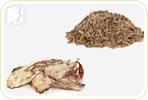After several years of being plagued with intense menopause symptoms, women enter postmenopause in desperate hopes for some well-deserved relief. While it is true that many of the discomforts lessen or disappear, postmenopause comes with a nest of health challenges
Read on to discover postmenopausal symptoms treatments and enjoy this life phase feeling healthy, strong, and empowered.
Three Approaches to Treating Postmenopause Symptoms
There are three approaches to treating postmenopause treatments: (1) Lifestyle changes, (2) Alternative medicine, and (3) Medications, which range from low-risk options to more invasive treatments. It is recommended to start with the most natural approaches and move on to more risky ones only if necessary.
Lifestyle Changes for Postmenopause Treatments

First-level treatments for postmenopause symptoms involve the least amount of risk, though they do require the highest amount of self-discipline. Nevertheless, such simple adjustments in one's lifestyle can help lessen symptoms naturally.
Nutritious Diet
In postmenopause, it is crucial to implement healthy habits to maintain proper nutrition, decrease the risk of cardiovascular disease, control weight gain, and strengthen the body from within. This can be done with a balanced menopause diet revolving around lean protein, healthy fats, and complex carbs that are rich in the following nutrients:
- Phytoestrogens are compounds found in plants that help lessen hormonal imbalance and its debilitating effects on the body.
Soy, oats, apple, flax, alfalfa
- Calcium in properly increased amounts is essential during postmenopause to maintain strong bones and prevent fractures.1
Broccoli, sesame seeds, chia seeds, pumpkin seeds
- Vitamin D helps the body absorb calcium from food more effectively, helping protect the bones and muscles.1
Eggs,carrots, papaya, mangoes, avocados
Regular Exercise
While it may be tempting to give in to a stationary lifestyle in postmenopause, women are encouraged to keep active with a few slight modifications. Regular exercise is key for the heart, bones, muscles, weight, mood, and more, and women who are not active are more likely to have various health issues, like insomnia, diabetes, or high blood pressure.
Amount: An ideal exercise routine consists of at least 150 minutes of low- to moderate-level physical activity per week, evenly broken up into shorter, daily trainings.2
Type: The best workouts for postmenopausal women are a combination of endurance, strength-building, and balance exercises. That includes swimming, brisk walking, and working out with resistance bands.
Useful tips: To keep their workout routines safe and pleasurable, women should remember proper hydration, adequate sportswear, and exercising in well-ventilated spaces.
Precautions: Since postmenopausal women are more susceptible to bone fractures, it is key to avoid high impact and injury-prone exercises.3
Wholesome Habits
Healthy habits in postmenopause are not only limited to a woman's diet and exercise. Optimizing one's daily rituals to make them more wholesome can have beneficial effects on the body and mind alike.
Managing stress and being in the present through yoga, deep breathing, and meditation can help women face postmenopausal challenges feeling at peace and in control.
Taking care of mental health during postmenopause is important as women may be more likely to experience depression, anxiety, or other mental health difficulties.4
Engaging in hobbies can be a wonderful addition to a woman's lifestyle, which strengthens the feelings of being needed, gives her days structure, and surrounds her with friends and family.
Quitting addictions to nicotine is a must in treating postmenopause symptoms as it can contribute to hormonal imbalance and has been linked to lower bone mineral density in postmenopausal women.5
Alternative Medicine for Postmenopause Treatments

Second-level treatments for postmenopause symptoms consist of various alternative approaches, including herbal supplements. They are an affordable, low-risk way to balance hormones and alleviate postmenopause symptoms.
There are two types of herbal supplements that may be used to treat postmenopausal symptoms: phytoestrogenic and hormone-regulating supplements.
Phytoestrogenic Supplements
Phytoestrogenic herbs, such as ginseng, contain plant-based compounds that resemble estrogen. When they enter the body, these estrogenic compounds help balance hormone levels and lessen the symptoms of an imbalance. However, adding outside hormones to the body can reduce its capability to produce its own hormones, which may cause further decline. As such, phytoestrogenic supplements are best used short-term.
Hormone-Regulating Supplements
Hormone-regulating supplements, like Macafem, do not contain plant estrogens or any external hormones. Rather, they nourish the endocrine glands to promote natural hormone production. The resulting balance helps relieve postmenopause symptoms. These supplements are considered safe and effective since they virtually cause no side effects, can be used long-term, and stimulate hormone production from within.
From Nature and Health Magazine, Dr. Chacon says:
"Macafem's nutrients help restore natural hormones in women. Unlike hormone drugs, which are basically resumed in taking synthetic hormones, Macafem acts totally different in your body. It nourishes and stimulates your own natural hormone production by inducing the optimal functioning of the pituitary and endocrine glands." Click on the following link to learn more about Macafem.
A combination of lifestyle changes and herbal supplements is usually the most effective and sufficient treatment for postmenopausal symptoms. However, severe symptoms may require more conventional treatment methods.
Conventional Medicine for Postmenopause Treatments

Third-level treatments for postmenopause symptoms often carry the highest cost, and some may come with serious side effects. Nevertheless, conventional medicine can be an important tool in relieving symptoms after menopause.
Hormone Replacement Therapy (HRT)
HRT was once a very popular treatment method for postmenopausal ailments. While it can be a quick and powerful treatment, its use has been associated with serious side effects and major health risks, as seen in the following studies. Consequently, HRT is generally prescribed only for severe symptoms.
Other Medications
The choice of other medications for postmenopause symptoms will depend on their nature and severity. They may include the following:
Vaginal estrogen works locally on vaginal tissue, as opposed to the entire body as systemic HRT does. This way, it can help relieve vaginal dryness and help with painful intercourse.
Antidepressants are sometimes prescribed to postmenopausal women with depression or other related difficulties.
Osteoporosis medications work by increasing bone density and reducing the rate of bone break down, which helps strengthen the bones and reduce the risk of fractures.
The three aforementioned approaches to treating postmenopause symptoms can be used in any combination, depending on symptom severity and a woman's health status. Yet, more and more women manage their symptoms by blending healthy lifestyle changes and hormone-regulating herbal supplements without relying on risky treatments.
A Safe Way of Treating Postmenopause Symptoms
Implementing Lifestyle Changes:
- Eating foods rich in phytoestrogens, calcium, and vitamin D
- Opting for low or moderate exercise for 150 minutes per week
- Relieving stress through yoga, meditation, and deep breathing
- Promoting healthy habits and engaging in hobbies
And Taking Herbal Supplements:
- Phytoestrogenic herbal supplements, like ginseng
- Or natural hormone-regulating supplements, like Macafem
Sources
- American College of Obstetricians and Gynecologists. (n.d.). The Menopause Years. Retrieved July 15, 2020, 2020 from https://www.acog.org/patient-resources/faqs/womens-health/the-menopause-years
- Harvard Health Publishing. (2019). Menopause and Perimenopause. Retrieved July 15, 2020 from https://www.health.harvard.edu/a_to_z/menopause-and-perimenopause-a-to-z
- Johns Hopkins Medicine. (n.d.). Staying Healthy After Menopause. Retrieved July 15, 2020 from https://www.hopkinsmedicine.org/health/conditions-and-diseases/staying-healthy-after-menopause
- Mayo Clinic. (2020). Osteoporosis treatment: Medications can help. Retrieved July 15, 2020 from https://www.mayoclinic.org/diseases-conditions/osteoporosis/in-depth/osteoporosis-treatment/art-20046869
- Mayo Clinic. (2019). Fitness tips for menopause: Why fitness counts. Retrieved July 15, 2020 from https://www.mayoclinic.org/healthy-lifestyle/womens-health/in-depth/fitness-tips-for-menopause/art-20044602
- Medline Plus. (2020). Menopause. Retrieved July 15, 2020 from https://medlineplus.gov/menopause.html
- North American Menopause Society. (n.d.). Fitness after 40: Building the right workout for a better body. Retrieved July 15, 2020 from https://www.menopause.org/for-women/menopauseflashes/exercise-and-diet/fitness-after-40-building-the-right-workout-for-a-better-body
- North American Menopause Society. (n.d.). Menopause FAQs: Understanding the Symptoms. Retrieved July 15, 2020 from https://www.menopause.org/for-women/expert-answers-to-frequently-asked-questions-about-menopause/menopause-faqs-understanding-the-symptoms
- Office on Women's Health. (2018). Menopause. Retrieved July 15, 2020 from https://www.womenshealth.gov/menopause
- University of Utah. (n.d.). Postmenopause. Retrieved July 15, 2020 from https://healthcare.utah.edu/womenshealth/gynecology/menopause/postmenopause.php
Footnotes:
- Therapeutics and Clinical Risk Management. (2008). The use of calcium and vitamin D in the management of osteoporosis. Retrieved July 15, 2020 from https://www.ncbi.nlm.nih.gov/pmc/articles/PMC2621390/
- Journal of Mid-Life Health. (2011). Exercise beyond menopause: Dos and Don'ts. Retrieved July 15, 2020 from https://www.ncbi.nlm.nih.gov/pmc/articles/PMC3296386/
- Chronic Diseases and Translational Medicine. (2015). Primary osteoporosis in postmenopausal. Retrieved July 15, 2020 from https://www.ncbi.nlm.nih.gov/pmc/articles/PMC5643776/
- Indian Journal of Psychiatry. (2015). Postmenopausal syndrome. Retrieved July 15, 2020 from https://www.ncbi.nlm.nih.gov/pmc/articles/PMC4539866/
- American Family Physician. (2008). Health Maintenance for Postmenopausal Women. Retrieved July 15, 2020 from https://www.aafp.org/afp/2008/0901/p583.html
- JAMA. (2002). Risks and benefits of estrogen plus progestin in healthy postmenopausal women: principal results from the Women's Health Initiative randomized controlled trial. Retrieved July 15, 2020 from https://www.ncbi.nlm.nih.gov/pubmed/12117397
- The Lancet. (2019). Type and timing of menopausal hormone therapy and breast cancer risk: individual participant meta-analysis of the worldwide epidemiological evidence. Retrieved July 15, 2020 from https://www.thelancet.com/journals/lancet/article/PIIS0140-6736(19)31709-X/fulltext


